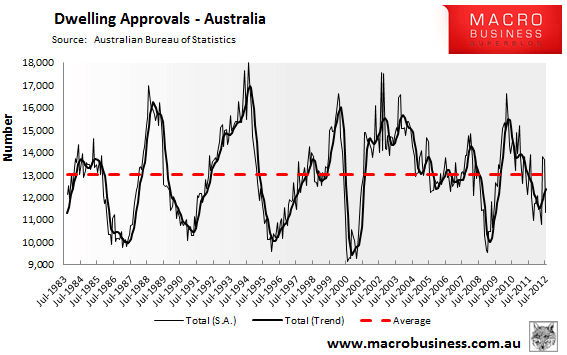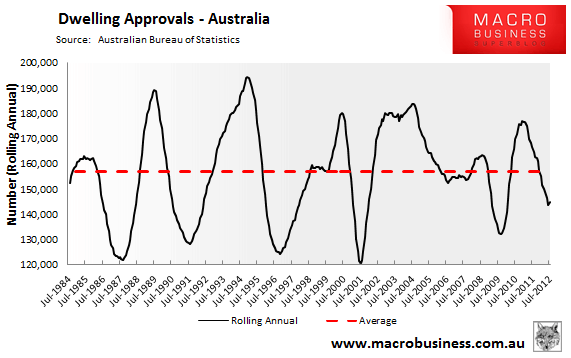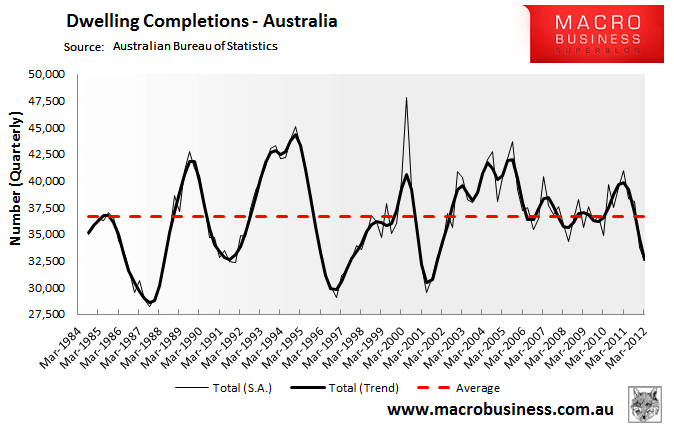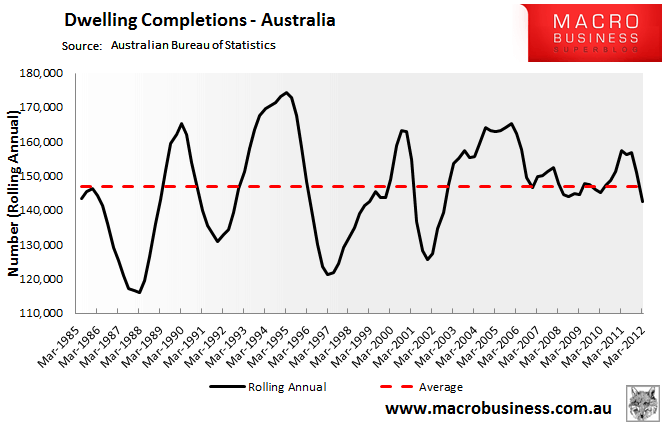
Following on from yesterday’s post, construction industry job losses loom, I want to take readers through some long-term charts that illustrate just how depressed the nation’s home building industry is at present.
First, the seasonally-adjusted and trend monthly dwelling approvals are compared against the average dwelling approvals over the history of the time-series:

Dwelling approvals were -13% (seasonally-adjusted) and -3% (trend) below the 29-year average in July.
It’s a similar story when seasonally-adjusted rolling annual dwelling approvals are compared against the average:

In the year ended July 2012, annual dwelling approvals were -7% below the 28-year average.
Turning to dwelling completions, again it’s a similar story. First, the seasonally-adjusted and trend quarterly dwelling completions are compared against the average dwelling completions over the history of the time-series:

In the March quarter of 2012, both seasonally-adjusted and trend dwelling completions were -11% below the 28-year average.
Now, seasonally-adjusted rolling annual dwelling completions are compared against the average:

In the year ended March 2012, annual dwelling completions were -3% below the 27-year average.
Given that Australia’s population is now around 40% larger than it was in 1985, it is clear that dwelling construction nationally, both in an absolute and relative sense, is currently weak. The above charts also highlight why greater effects need to be placed on freeing-up planning and other impediments to affordable housing supply.
Twitter: Leith van Onselen. Leith is the Chief Economist of Macro Investor, Australia’s independent investment newsletter covering trades, stocks, property and yield. Click for a free 21 day trial.

